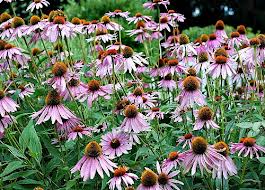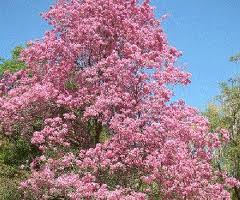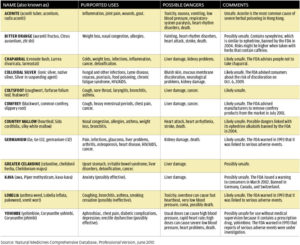Keep in mind that natural products are not studied as much as pharmaceuticals – there’s not as much money to be made. Lack of studies proving effectiveness does not mean lack of effectiveness!
PLEASE READ: Doctors and pharmacists automatically instruct their patients to keep taking antibiotic tablets until the bottle is empty. And to do so regardless of whether the symptoms of the infection have cleared up or not. This is primarily to fight against the poissibility of reinfection.
Likewise, the same advice should be heeded when using natural antibiotics. Seven to ten days of use should be adequate.
Also, like their chemical counterparts, natural antibiotics can kill friendly gut flora, and lately scientists are realising how important they are for our wellbeing. So, use natural antibiotics only when absolutely necessary. And once the course is completed, you can partially replace the good bacteria in your stomach by consuming fresh yogurt with live cultures such as acidophilus.
Although ignorant doctors regularly prescribe antibiotics for viruses, they are only good for treating infections. Likewise, the following remedies are probably not useful for killing viruses.

Garlic has been used for medicinal purposes for seven thousand years, throughout Asia, Europe and Africa:
Hippocrates, Galen, Pliny the Elder, and Dioscorides all mention the use of garlic for many conditions, including parasites, respiratory problems, poor digestion, and low energy. Its use in China dates back to 2000 BCE. It was consumed by ancient Greek and Roman soldiers, sailors, and rural classes (Virgil, Ecologues ii. 11), and, according to Pliny the Elder (Natural History xix. 32), by the African peasantry. Galen eulogizes it as the “rustic’s theriac” (cure-all) (see F. Adams’ Paulus Aegineta, p. 99), and Alexander Neckam, a writer of the 12th century (see Wright’s edition of his works, p. 473, 1863), recommends it as a palliative for the heat of the sun in field labor.
[Source: Wikipedia]
There are so many applications for this tried and true plant that its effectiveness as an antibiotic remedy is certain:
- Earache
- Diabetes
- Digestive disorders
- Fungal infections
- Pneumonia
- MRSA
- HIV
- Scurvy
- Coughs and colds
- Helicobacter pylori
- Influenza
- Black plague!
During WW2, garlic was nicknamed the “Russian penicillin”. It might also be the reason that French people are quite healthy relative to the foods they consume. It’s either garlic, wine or both.
Garlic works in three ways:
1. Garlic contains a number of antioxidants that kill bacteria and free radicals in the bloodstream, therefore protecting and strengthening the immune system.
2. One of garlic’s active ingredients is allicin, which is an antibiotic and anti-fungal compound.
3. Garlic’s other active ingredient is phytoncide, an anti-fungal compound – a remedy for fugal infections, such as candida.

Echinacea
There have been numerous studies researching the effectiveness of echinacea in combating the common cold. Unfortunately the low quality of the studies, combined with a large variety of different echinacea plants means that the jury is still out. Having said that, many studies concluded that echinacea can reduce the length of a cold by half.
Echinacea has been used for hundreds of years to improve the immune system and fight various infections. Its use originated with the Native Americans, who observed elk consuming the plant when they were sick or injured. Consequently they would use it for treating snakebites. In Europe it was later used as a remedy for anthrax, and as general pain relief.
According to some naturopath researchers, echinacea can treat open wounds, diptheria, syphilitic lesions, cellulitis, blood poisoning, Staphylococcus aureus (the cause of MRSA) and other bacterial diseases and infections.

Colloidal Silver
Wikipedia: There is no evidence that colloidal silver treats or prevents any medical condition, and it can cause serious and potentially irreversible side effects such as argyria. In August 1999, the U.S. FDA banned colloidal silver sellers from claiming any therapeutic or preventive value for the product.
While on the subject, this chart of supplements to avoid is courtesy of Consumer Reports (click to enlarge):

Pau D’Arco
Tabebuia is a flowering tree from South America, the bark of which is used to make a tea known as Pau d’Arco – a tradional medicine of the native Indians. The active ingredient is lapachol, has been found to relieve a wide range of infections include those initiated by bacteria, viruses and fungus – including eczema, and candidiasis. Studies have suggested that Pau d’arco might also have some cancer-fighting properties, however much more research is needed.

Manuka Honey
Wikipedia: A 2002 review found that although the antibacterial activity of honeys (including m?nuka honey) had been demonstrated in vitro, the number of clinical case studies was small. The review concluded that there was a potential for its use in “the management of a large number of wound types”. A 2008 Cochrane Review found that honey may help improve superficial burns compared to standard dressing, but there was insufficient evidence from studies, many of which were on m?nuka honey, to be conclusive…
Manuka honey comes from Australia and New Zealand, where some bees feed from Manuka trees. It can be used topically (that means you apply it to the wound) to treat injuries, infections and burns. It might also be effective against MRSA and flesh-eating bacteria. As is often the case with natural products, there have not been sufficient studies to prove its effectiveness.
Tabasco Sauce / Hot Chili Peppers
Hot spices and chilies came to be used in cooking where daytime temperatures soar and un-refrigerated foods can quickly spoil. They slow down the spoiling of foods by killing bacteria. They can also do the same for you if ingested / eaten.

